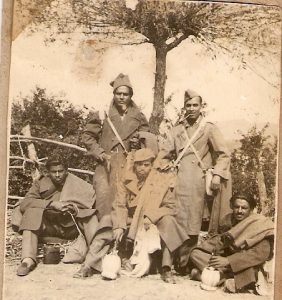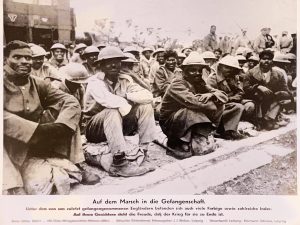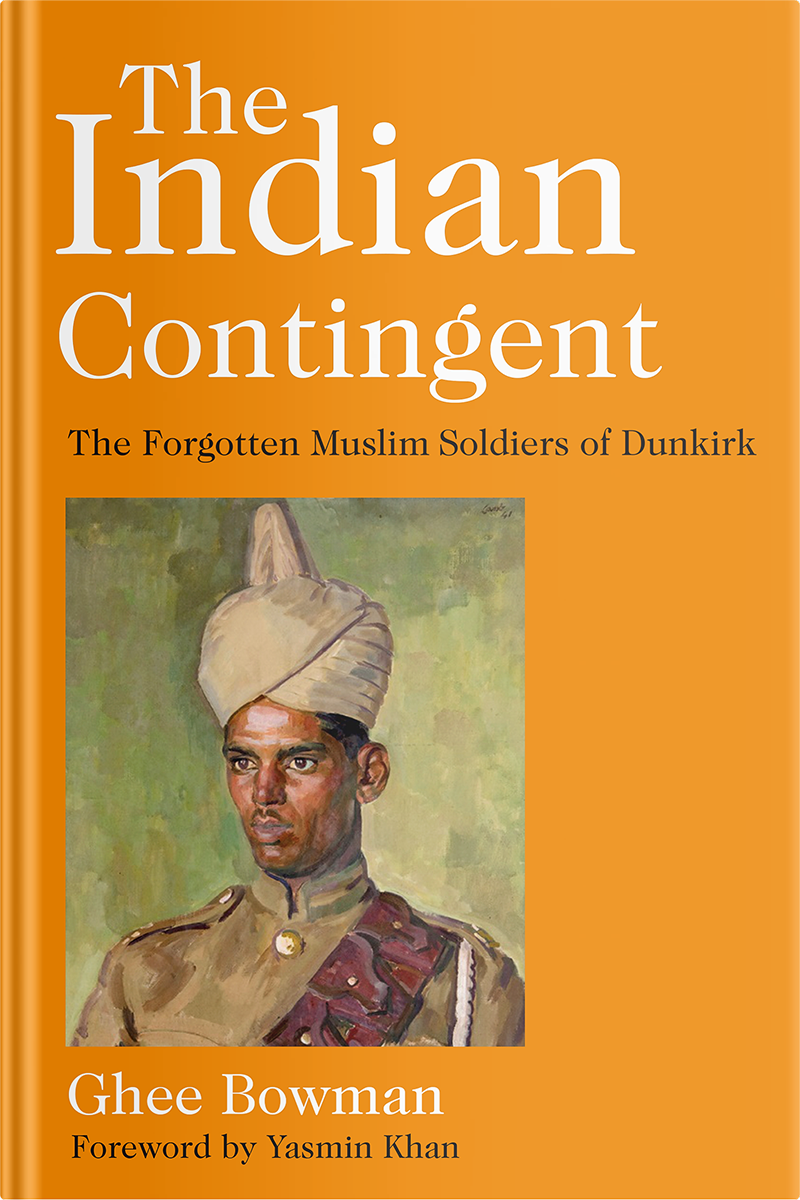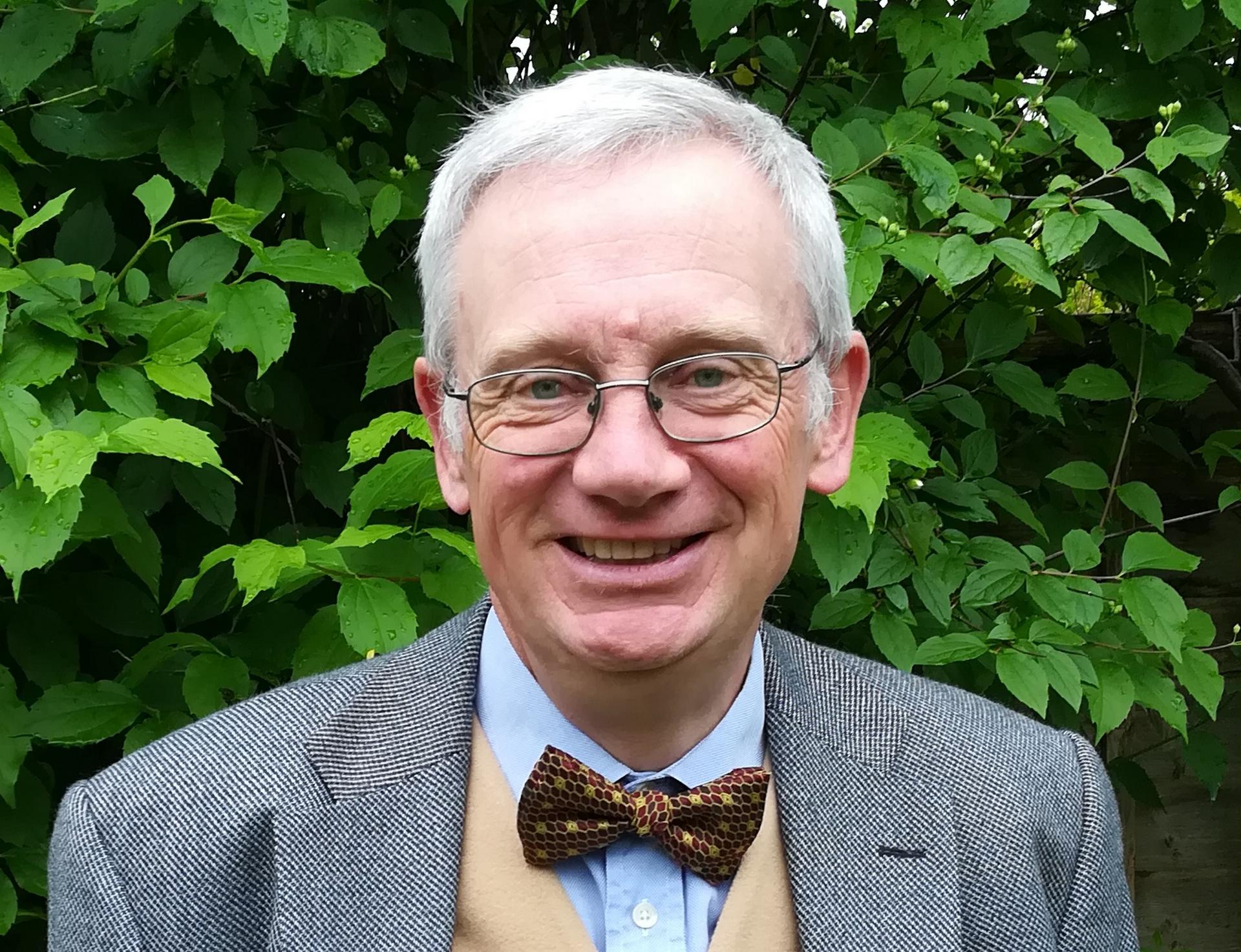
Standing L to R: Pacheco Sarto, Lt Valentine Aloysius D’Souza, Sharafat Ali, RG Salvi, Murafat Ali
An English historian has made a trip to India in search of memories of Indian Army Prisoners of War in Europe during the Second World War. Ghee Bowman of Exeter University is in India until May, aiming to speak to the families of POWs.
Ganpatrao Tawde was from Ratnagiri, a Havildar clerk in the Mahratta Light Infantry. He was captured in Libya in May 1942 and spent several years in camps in Italy, Germany and France, before escaping to Switzerland and eventually making his way back to India. He was awarded the Military Medal for his bravery. Bowman wants to find out more about him, and share his story with the world.
‘What happened to him after the war?’ Bowman asked ‘Did he talk about his experiences with his family? Did he perhaps write about them? So many of these stories are forgotten – the men took the memories with them when they died. I want to unearth some of these extraordinary tales and share them with people in India, the UK and everywhere.’
Lieutenant RG Salvi was also in the Mahrattas. He escaped from an Italian camp with four comrades – two Muslims and two Indian Christians – in September 1943 and hid in the hills for nine months until the Allies finally arrived. The villagers from San Sebastiano sheltered them and brought them food every day, despite the danger from the Germans. Salvi wrote his story in a book in the 1980s, and his grandson Samar keeps the memory alive by talking to press, relatives and anyone who will listen.
‘I’m sure that Salvi was not the only one to write down his experiences, or to keep photos’ Bowman says. ‘I’ve built up a list of nearly 12,000 prisoners in Europe – Muslims, Sikhs, Hindus, Gurkhas and Indian Christians. I’m sure there are children and grandchildren in India right now who’ve got a little pile of letters and photos in a drawer, or maybe even a memoir that their relative wrote.’
Bowman insists that this is not a one-way process. ’I’m very happy to share what I already know with families and the wider Indian public. I’ve got letters, photos, recommendations for medals that I’ve found in archives and newspapers. I would love to be able to restore these to the descendants of these brave men’.
‘I’ve read so many incredible stories. Stories of murder, of escape and hiding in the hills for months, of waiting, of collaboration, romance & babies. The full richness of life was represented in those camps – prayer, illness and suffering, learning and enduring, and the lighter side like camp newspapers and sports days, dramatic societies, Red Cross parcels delivering cigarettes and treats. I aim to challenge the narrative that says ‘Indians weren’t there, Indians don’t care about the Second World War’. I’m looking for people who remember that they were there. As a public historian, my job is to find these stories and share them with the world”.

Official German photo of a group of newly captured Indian POWs. Possibly taken after El Mechili
Bowman is eager to find the family of Lance Naik Jai Lal of the Royal Indian Army Service Corps. After escaping from a camp in France, Jai Lal joined the French Resistance and married a 17 year old French girl. He was given a medal, but then the story goes cold. What other amazing things did he do in his life?
If you have any memories to share, you can find Dr Ghee Bowman on twitter @GheeBowman or by emailing G.Bowman2@exeter.ac.uk
ends
580 words


